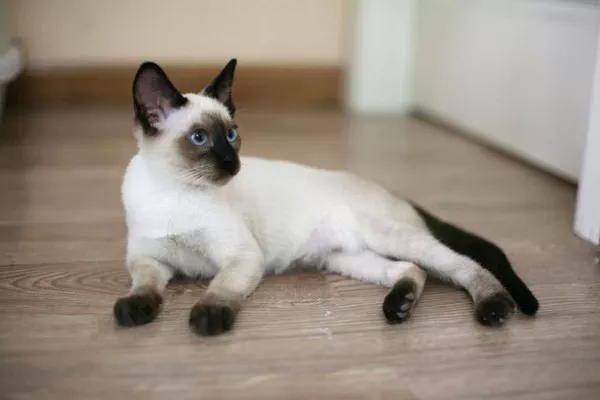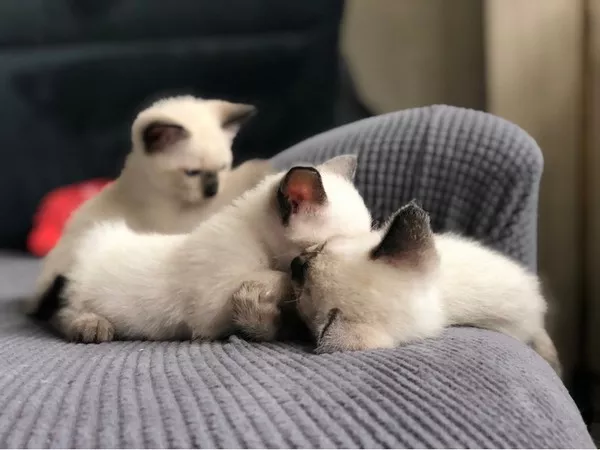Siamese cats are renowned for their striking blue eyes, sleek coats, and distinctive personalities. However, one characteristic that sets them apart from other feline breeds is their tendency to exhibit a condition known as nystagmus. Nystagmus is characterized by involuntary, rhythmic movements of the eyes, which can manifest as rapid flickering, rolling, or jerking movements. While nystagmus can occur in cats of any breed, it is particularly prevalent in Siamese cats. In this article, we delve into the complex genetics and underlying factors that contribute to nystagmus in Siamese cats, shedding light on this intriguing phenomenon.
Understanding Nystagmus
Before delving into the specific reasons behind nystagmus in Siamese cats, it is essential to understand the nature of this condition. Nystagmus is a neurological disorder that affects the coordination and movement of the eyes. It can manifest as horizontal, vertical, or rotary movements and may be present from birth (congenital nystagmus) or develop later in life (acquired nystagmus). While nystagmus itself is not typically harmful to cats, it can sometimes be indicative of an underlying health condition or genetic predisposition.
The Genetics of Siamese Cats
To understand why Siamese cats are more prone to nystagmus, it is crucial to examine the genetics underlying this breed. Siamese cats are known for their distinctive coloration, which is characterized by a light-colored body with darker points on the ears, face, paws, and tail. This coloration is the result of a genetic mutation known as the Himalayan gene, which affects the production of pigment in the fur.
The Link Between Coat Color and Eye Abnormalities
Interestingly, the same genetic mutation responsible for the unique coat coloration of Siamese cats is also believed to be linked to certain eye abnormalities, including nystagmus. The gene responsible for the Himalayan coloration is closely associated with the development of the eye and nervous system during embryonic development. As a result, mutations in this gene can potentially affect the structure and function of the eyes, leading to abnormalities such as nystagmus.
Albinism and Eye Sensitivity
Another factor that may contribute to nystagmus in Siamese cats is their predisposition to albinism. While Siamese cats are not true albinos, they do exhibit partial albinism, which results in a lack of pigment in the fur, skin, and eyes. Albinism is associated with a range of eye abnormalities, including reduced visual acuity, sensitivity to light (photophobia), and abnormal eye movements such as nystagmus. The absence of pigment in the eyes may make them more susceptible to light-induced damage and other structural abnormalities that can contribute to nystagmus.
Congenital Disorders and Developmental Abnormalities
In some cases, nystagmus in Siamese cats may be associated with congenital disorders or developmental abnormalities affecting the nervous system. These conditions can disrupt the normal development and function of the ocular motor system, leading to abnormal eye movements such as nystagmus. While the exact mechanisms underlying these disorders remain poorly understood, they are believed to result from a combination of genetic and environmental factors that interfere with normal embryonic development.
Inbreeding and Genetic Predisposition
Inbreeding, or the mating of closely related individuals, is common in purebred cat populations, including Siamese cats. While inbreeding can help maintain desirable traits and characteristics within a breed, it can also increase the prevalence of genetic disorders and abnormalities, including nystagmus. Inbreeding can lead to the accumulation of deleterious recessive genes, which may increase the likelihood of offspring inheriting conditions such as nystagmus.
Environmental Factors and Stress
While genetics play a significant role in predisposing Siamese cats to nystagmus, environmental factors and stress may also contribute to the development or exacerbation of this condition. Environmental stressors such as changes in routine, unfamiliar surroundings, or social disruptions can trigger anxiety and nervousness in cats, which may manifest as abnormal eye movements or other behavioral abnormalities. Additionally, exposure to toxins or infectious agents during early development may disrupt normal neurological function and contribute to the development of nystagmus.
Management and Treatment
While nystagmus itself is not typically harmful to cats, it is essential to monitor affected individuals for any signs of discomfort or secondary complications. Regular veterinary check-ups can help ensure that any underlying health conditions or abnormalities are promptly identified and addressed. In some cases, medications or supportive therapies may be recommended to alleviate symptoms or manage associated conditions such as photophobia or visual impairment.
Conclusion
In conclusion, nystagmus in Siamese cats is a complex phenomenon with multifactorial causes, including genetic predisposition, developmental abnormalities, and environmental factors. While the precise mechanisms underlying nystagmus in Siamese cats remain the subject of ongoing research, it is clear that genetics plays a significant role in predisposing these cats to this condition. By gaining a better understanding of the factors contributing to nystagmus in Siamese cats, veterinarians and cat owners can take proactive steps to monitor and manage affected individuals, ensuring their health and well-being.


























